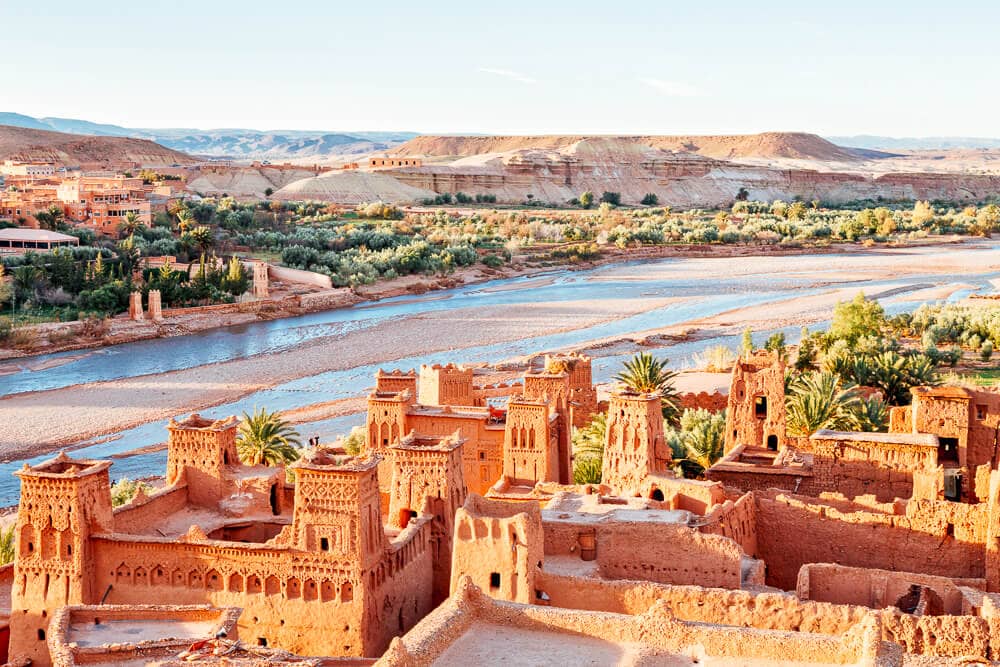
Unveiling Morocco’s Soul: A Journey Through Culture and Heritage
Morocco, a land where the sands of the Sahara meet the azure waters of the Atlantic and Mediterranean, is a cultural tapestry woven from Berber, Arab, European, and African threads. More than just a destination for stunning landscapes and vibrant cities, Morocco is an immersive experience for those seeking to delve into its rich heritage. A cultural trip to Morocco is an invitation to witness ancient traditions, savor exquisite flavors, and connect with the warmth and hospitality of its people.
The Heart of Moroccan Culture: The Imperial Cities
No cultural exploration of Morocco is complete without visiting its Imperial Cities: Fes, Marrakech, Meknes, and Rabat. Each city served as a capital at different periods in Morocco’s history, leaving behind a unique architectural and cultural legacy.
-
Fes: The Spiritual and Intellectual Center
Fes, the oldest of the Imperial Cities, is a UNESCO World Heritage site and often considered Morocco’s cultural heart. Its medina, Fes el Bali, is a labyrinthine maze of narrow alleyways, bustling souks (markets), and historic buildings.
-
Al-Attarine Madrasa: A stunning example of Islamic architecture, with intricate tilework, carved cedarwood, and peaceful courtyards.
-
Chouara Tanneries: A sensory experience, witnessing the traditional process of tanning leather using natural dyes.
-
Kairaouine Mosque and University: One of the oldest universities in the world, though non-Muslims are not permitted to enter the mosque itself.
-
Fes el Jedid (New Fes): Explore the Jewish quarter (Mellah) and the Royal Palace.
-
-
Marrakech: The Red City
Marrakech, a city of vibrant energy and captivating beauty, is known for its bustling Djemaa el-Fna square, where storytellers, musicians, snake charmers, and food vendors create a nightly spectacle.
-
Djemaa el-Fna: Experience the sensory overload of the square, especially at night.
-
Koutoubia Mosque: Admire the iconic minaret, a symbol of Marrakech.
-
Bahia Palace: Explore the opulent palace, showcasing Moroccan craftsmanship and design.
-
Saadian Tombs: Discover the hidden tombs of the Saadian dynasty, adorned with intricate carvings and colorful tiles.
-
Majorelle Garden: Escape the city’s hustle in this tranquil garden, created by the French artist Jacques Majorelle and later owned by Yves Saint Laurent.
-
-
Meknes: The City of a Thousand Minarets
Meknes, a UNESCO World Heritage site, is a more laid-back Imperial City, known for its grand gates, historic medina, and the Mausoleum of Moulay Ismail.
-
Bab Mansour: Admire the monumental gate, considered one of the most beautiful in Morocco.
-
Heri es-Souani: Explore the ruins of the massive granaries and stables built by Moulay Ismail.
-
Mausoleum of Moulay Ismail: Visit the tomb of the powerful sultan, a significant religious site.
-
-
Rabat: The Modern Capital
Rabat, the current capital of Morocco, offers a blend of historical and modern attractions, with well-preserved Roman ruins, elegant boulevards, and a charming medina.
-
Kasbah of the Udayas: Explore the historic fortress with its blue-and-white buildings and stunning views of the Atlantic Ocean.
-
Hassan Tower: Visit the unfinished minaret of a grand mosque, a symbol of Rabat.
-
Chellah: Discover the Roman ruins and Islamic necropolis, a peaceful oasis within the city.
-
Beyond the Cities: Berber Culture and Desert Adventures
To truly understand Morocco, venture beyond the Imperial Cities and immerse yourself in the Berber culture and the dramatic landscapes of the Sahara Desert.
-
The Berber People:
The Berbers, or Amazigh, are the indigenous people of North Africa. Their culture is rich in traditions, music, language, and craftsmanship.
-
Atlas Mountains: Explore the High Atlas Mountains, where you can visit Berber villages, hike through stunning scenery, and learn about their way of life.
-
Gnaoua Music: Experience the hypnotic rhythms and spiritual energy of Gnaoua music, a unique blend of Berber, African, and Islamic influences.
-
Berber Carpets: Learn about the art of Berber carpet weaving, with each region and tribe having its own distinct designs and techniques.
-
-
The Sahara Desert:
A journey into the Sahara Desert is an unforgettable experience, offering a glimpse into the vastness and beauty of the desert landscape.
-
Merzouga: Visit the Erg Chebbi dunes near Merzouga, where you can ride camels, sandboard, and spend a night in a traditional Berber camp under the stars.
-
Zagora: Explore the Draa Valley near Zagora, known for its palm groves and ancient kasbahs.
-
Fossil Hunting: Discover the rich fossil deposits in the Sahara, a testament to the region’s ancient history.
-
Culinary Delights: A Feast for the Senses
Moroccan cuisine is a delicious blend of Berber, Arab, and Mediterranean influences, using fresh ingredients, aromatic spices, and traditional cooking techniques.
-
Tagine: A slow-cooked stew, typically made with meat, vegetables, and spices, cooked in a conical earthenware pot.
-
Couscous: Steamed semolina grains, served with meat, vegetables, and a flavorful broth.
-
Pastilla: A savory-sweet pie, filled with pigeon or chicken, almonds, and spices, dusted with powdered sugar and cinnamon.
-
Mint Tea: The quintessential Moroccan beverage, a symbol of hospitality and friendship.
-
Street Food: Explore the bustling souks and sample a variety of street food, such as grilled meats, pastries, and fresh juices.
Tips for a Meaningful Cultural Trip:
- Learn basic Arabic or French phrases: While English is spoken in tourist areas, knowing a few basic phrases in Arabic or French will enhance your interactions with locals.
- Dress respectfully: Dress modestly, especially when visiting religious sites.
- Be open to new experiences: Embrace the unexpected and be willing to try new things.
- Engage with locals: Take the time to talk to people, learn about their lives, and understand their perspectives.
- Respect local customs: Be aware of local customs and traditions, and be mindful of your behavior.
- Bargain respectfully: Bargaining is common in the souks, but do so respectfully and with a smile.
- Hire a local guide: A local guide can provide valuable insights into the culture and history of Morocco.
- Travel sustainably: Choose eco-friendly accommodations and support local businesses.
A cultural trip to Morocco is an invitation to step outside your comfort zone, embrace the unfamiliar, and discover the beauty and richness of a land steeped in history, tradition, and hospitality. From the vibrant cities to the serene desert, Morocco offers an unforgettable journey for those seeking to connect with its soul.



https://shorturl.fm/7UnPj
https://shorturl.fm/yZQAg
https://shorturl.fm/7m8xV
https://shorturl.fm/1iiq4
https://shorturl.fm/kpAPA
https://shorturl.fm/zhCTi